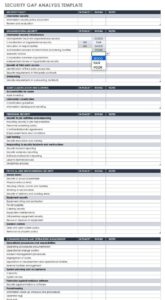A business analyst plays a vital role in bridging the gap between business and technology by analyzing and defining the requirements of a software system. To ensure the successful implementation of any project, capturing and documenting these requirements clearly and effectively is crucial. A requirements template for business analysts provides a structured approach for gathering, organizing, and communicating these requirements.
By utilizing a requirements template, business analysts can ensure that all necessary information is collected, such as stakeholder needs, functional and non-functional requirements, and acceptance criteria. This comprehensive documentation serves as a roadmap for the development team, guiding them in building a system that meets the business’s objectives. Moreover, it facilitates effective communication among stakeholders, reducing the risk of misunderstandings and ensuring that the final product aligns with the intended purpose.
Importance of a Comprehensive Requirements Template
A well-structured requirements template for business analysts offers numerous benefits, including:
- Enhanced Clarity and Precision: A template provides a predefined structure for capturing requirements, ensuring consistency and reducing ambiguity. This clarity facilitates better understanding and minimizes the likelihood of misinterpretation.
- Improved Stakeholder Engagement: By involving stakeholders in the requirements gathering process, a template encourages collaboration and ensures that their needs and expectations are considered.
- Reduced Development Time and Costs: A comprehensive requirements document eliminates the need for rework and iterations during development, leading to significant time and cost savings.
- Improved Project Success Rate: By providing a clear understanding of the requirements, a template increases the likelihood of project success, as the development team has a precise roadmap to follow.
- Enhanced Traceability and Accountability: A template enables traceability of requirements throughout the development lifecycle, ensuring that all requirements are accounted for and met.
Essential Elements of a Requirements Template
An effective requirements template for business analysts should include the following key elements:
- Requirement ID: A unique identifier for each requirement.
- Requirement Statement: A concise and clear description of the requirement.
- Stakeholder: The person or group who identified the requirement.
- Priority: The level of importance assigned to the requirement.
- Functional vs. Non-Functional: Classification of the requirement as functional (what the system should do) or non-functional (how the system should perform).
- Acceptance Criteria: The specific conditions that must be met for the requirement to be considered fulfilled.
- Dependencies: Any other requirements that must be met before this requirement can be implemented.
- Assumptions: Any underlying assumptions or constraints that affect the requirement.
- Status: The current state of the requirement (e.g., new, in progress, completed).
Conclusion
A requirements template for business analysts is an invaluable tool that enables the effective capture, organization, and communication of requirements. By providing a structured approach, it ensures clarity, precision, and stakeholder engagement. Ultimately, a comprehensive requirements template contributes significantly to the success of software development projects by minimizing development time and costs, improving project success rates, and enhancing communication among stakeholders.
As a business analyst, investing time in creating a robust requirements template is essential. It lays the foundation for successful project outcomes and paves the way for the development of high-quality software systems that meet the intended business objectives.

